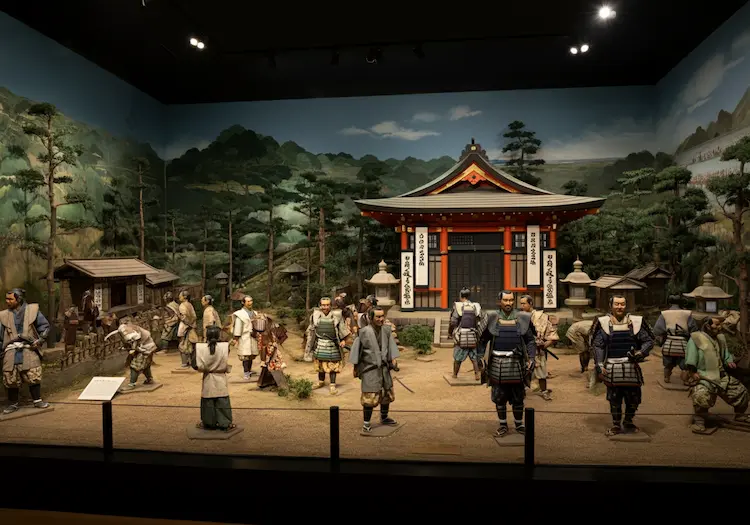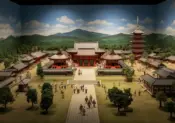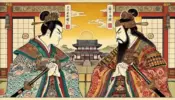Nara in the Kamakura Period – Challenges and Renewal in the Age of the Samurai
How did Nara adapt to the rise of samurai power? The Kamakura period (1185-1333) marked the rise of samurai rule in Japan and brought significant changes to the country’s social, political, and religious landscape. For Nara, a city that had long been a cultural and religious hub, this era presented both challenges and opportunities. Despite no longer being the political center of Japan, Nara’s ancient temples and its rich Buddhist traditions allowed it to remain a beacon of culture and spirituality during the rise of the samurai. This article explores how Nara navigated the shifting tides of power and continued to thrive during the Kamakura period.
- The Rise of the Samurai and Nara
- The Persistence of Nanto Buddhism and the Rise of New Buddhist Movements
- Cultural Revival and Restoration in Nara
- Nara’s Influence on National Buddhism
- International Exchange and Influence in Nara
- Modern Connections to the Kamakura Period in Nara
- Conclusion: Nara’s Journey Through the Kamakura Period
The Rise of the Samurai and Nara
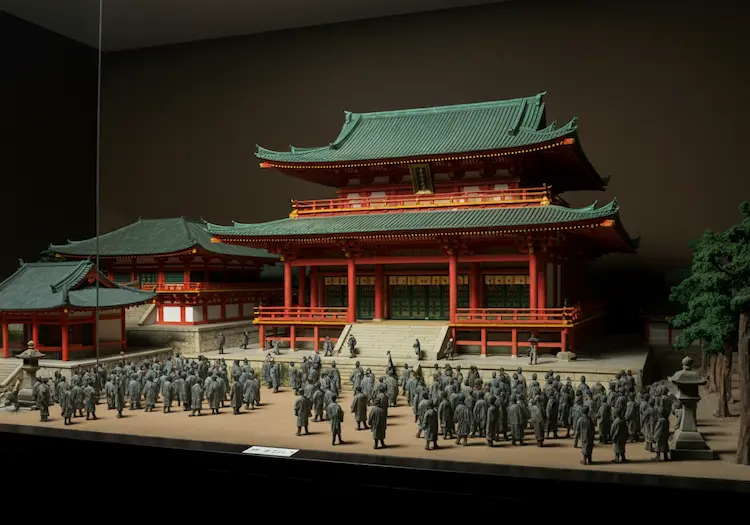
- The Kamakura Shogunate and its Relationship with Nara’s Temples: With the establishment of the Kamakura Shogunate by Minamoto no Yoritomo, the political dynamics of Japan shifted dramatically. The influence of powerful Buddhist temples in Nara, such as Tōdai-ji and Kōfuku-ji, had to adapt to this new reality. The temples of Nara, which had long been central to religious and cultural life, found new ways to align themselves with the samurai rulers. The Kamakura Shogunate supported the reconstruction of temples like Tōdai-ji, which had been damaged during the civil conflicts of the late Heian period, recognizing their significance as symbols of cultural continuity and spiritual power.
- Rebuilding Temples and Embracing New Roles: The rebuilding of Tōdai-ji’s Great Buddha (Daibutsu) was one of the most notable projects supported by the Kamakura Shogunate. This massive undertaking highlighted the collaboration between the military rulers and the Buddhist clergy. Temples such as Tōdai-ji and Kōfuku-ji were not just places of worship; they also became symbols of the legitimacy and power of the new shogunate. The reconstruction efforts were seen as a way to unite the country and instill a sense of pride and stability among the people.
The Persistence of Nanto Buddhism and the Rise of New Buddhist Movements
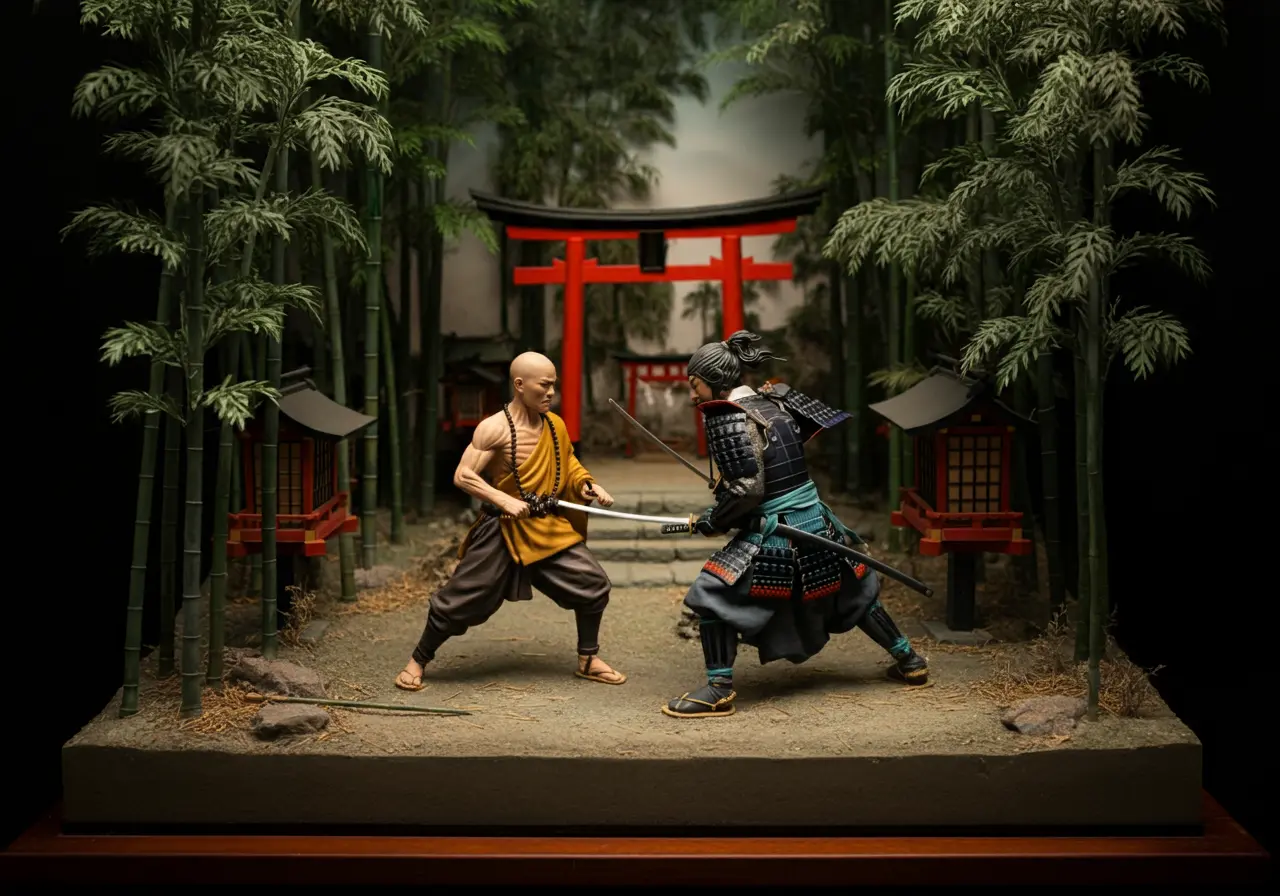
- The Survival of Nanto Buddhism: Nara Buddhism, often referred to as Nanto Buddhism, managed to maintain its influence throughout the Kamakura period. Despite the rise of new sects, the traditional temples of Nara continued to be significant centers of Buddhist learning and practice. The Kamakura Shogunate recognized the importance of preserving these institutions, and the temples received support that allowed them to maintain their religious and cultural authority.
- Impact of New Buddhist Movements: The Kamakura period also saw the rise of new Buddhist sects, such as Jōdo (Pure Land), Zen, and Nichiren Buddhism. These new movements resonated with the samurai and the common people alike, offering more accessible spiritual practices. Nara’s established temples faced the challenge of coexisting with these new sects. While some traditional temples resisted these changes, others adapted by integrating new teachings into their practices, reflecting a period of both competition and coexistence in the Buddhist world.
Cultural Revival and Restoration in Nara
- The Reconstruction of Tōdai-ji’s Great Buddha: One of the most significant cultural efforts of the Kamakura period was the reconstruction of the Great Buddha of Tōdai-ji. Originally constructed in the Nara period, the statue had been severely damaged during the civil conflicts of the late Heian era. With support from the Kamakura Shogunate and the dedication of countless artisans and monks, the Great Buddha was rebuilt, symbolizing resilience and unity. This effort underscored the role of Nara as a spiritual heart of Japan, where cultural heritage was actively preserved and renewed.
- Kōfuku-ji and the Influence of the Fujiwara Clan: Kōfuku-ji remained closely tied to the powerful Fujiwara clan, who had significant influence during the Kamakura period. The temple served as both a religious and a political symbol for the Fujiwara, demonstrating their continued prestige. The support of the Fujiwara family ensured that Kōfuku-ji remained a vital center of cultural and religious activity in Nara, even as political power shifted to the samurai class.
Nara’s Influence on National Buddhism
- Influence on Other Regional Temples: The influence of Nara’s major temples extended far beyond the city itself. The teachings and practices established in Nara continued to impact temples across Japan. During the Kamakura period, the interplay between Nara Buddhism and the new Kamakura Buddhist movements contributed to a rich and diverse religious landscape throughout the country.
- Warrior Monks and Temple Defense: The temples of Nara, especially Kōfuku-ji, maintained their own warrior monks, or sōhei, to protect their interests and properties. These warrior monks played a crucial role in the defense of the temples, reflecting the militarized nature of the era. The presence of sōhei demonstrated that temples were not just places of worship but also centers of political and military power in their own right.
International Exchange and Influence in Nara
Consider mentioning a specific artifact or cultural exchange event, such as the arrival of Buddhist scriptures from China or the influence of Korean artisans, which exemplifies Nara’s ongoing international influence during the Kamakura period.
- Continuing International Influence: Despite the political changes in Japan, Nara continued to experience international influence during the Kamakura period, especially through interactions with China and Korea. Nara’s temples housed numerous artifacts that reflected ongoing cultural exchanges, which helped shape the artistic and religious developments of the period. The connection with continental Asia enriched Nara’s cultural fabric, ensuring that the city remained a center of learning and artistry.
- Art and Cultural Artifacts: The cultural treasures housed in temples like Tōdai-ji and Shōsōin continued to include international artifacts, serving as a testament to Nara’s role in cultural preservation. These treasures, originating from China, Korea, and beyond, influenced the art and craftsmanship of the Kamakura period, demonstrating how Nara remained a vibrant link in Japan’s international cultural connections.
Modern Connections to the Kamakura Period in Nara
- Temples Preserving Kamakura-Era Heritage: Today, many of Nara’s iconic temples, such as Tōdai-ji and Kōfuku-ji, still bear the legacy of the Kamakura period. The efforts to rebuild and preserve these sites have allowed them to endure as symbols of resilience and cultural heritage. Visitors can witness the craftsmanship and dedication that went into these reconstructions, gaining insight into the cultural revival that took place during the Kamakura era.
- Cultural Events and Exhibitions: Modern Nara continues to celebrate its Kamakura-period heritage through cultural festivals and exhibitions. Events like the Great Buddha Festival at Tōdai-ji and exhibitions of artifacts from the Shōsōin offer glimpses into the past, allowing visitors to experience the historical richness of the Kamakura period firsthand. These experiences help connect contemporary audiences with Nara’s enduring legacy.
Conclusion: Nara’s Journey Through the Kamakura Period
Nara’s journey through the Kamakura period was marked by resilience, adaptation, and cultural revival. Despite the shift of political power to the samurai and the establishment of the Kamakura Shogunate, Nara retained its significance as a cultural and religious hub. The reconstruction of its temples, the persistence of Nanto Buddhism, and its role in both preserving and influencing Japanese culture highlight the city’s enduring legacy. Today, Nara stands as a testament to the resilience of Japan’s cultural heritage—a place where history comes alive, inviting us to reflect on the past and draw inspiration for the future. Visit Nara and explore the timeless beauty of an ancient city that has withstood the challenges of the ages.
